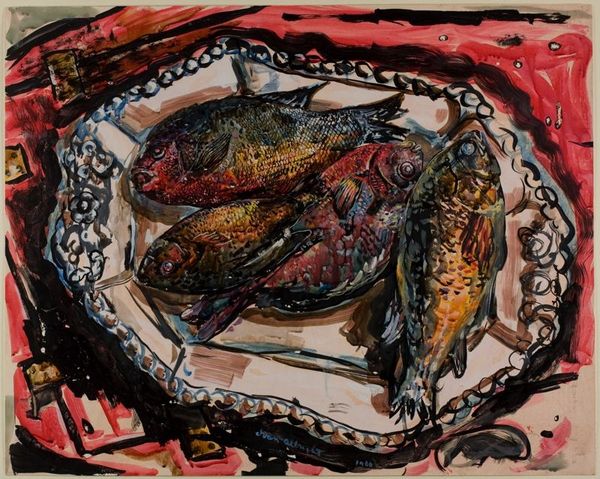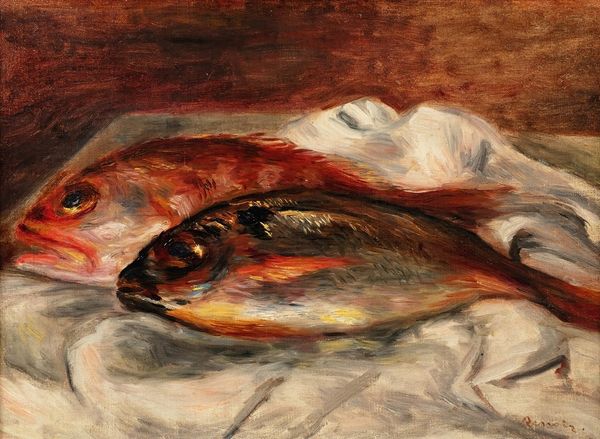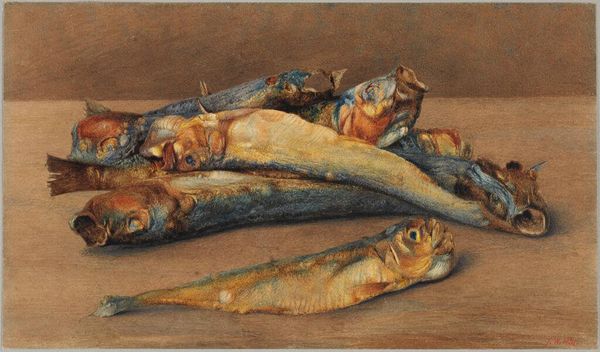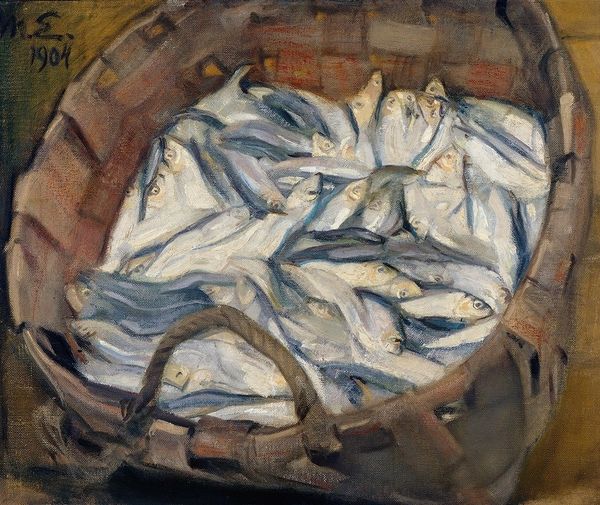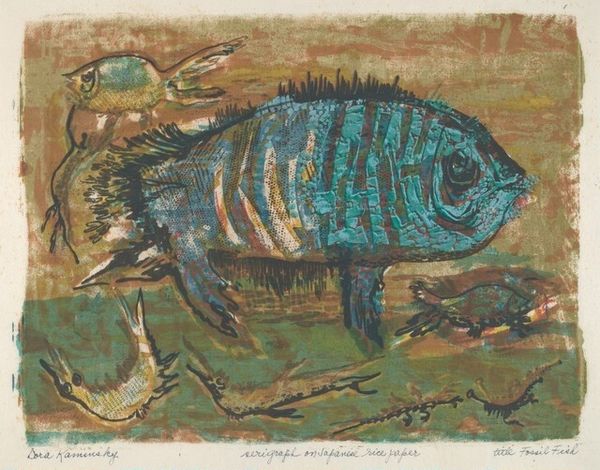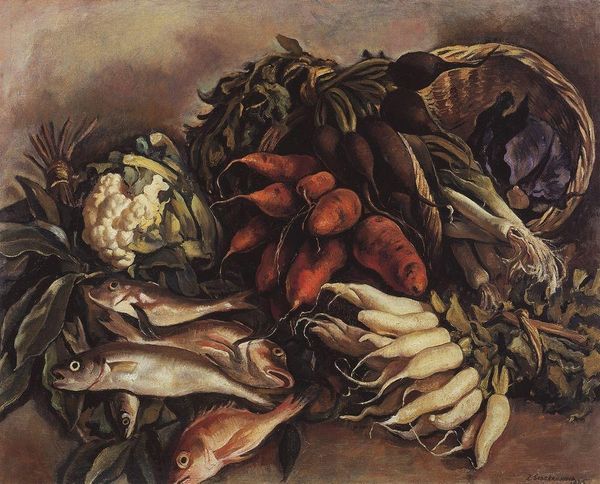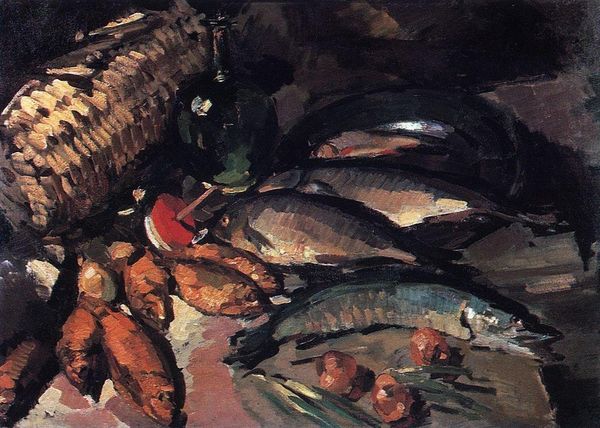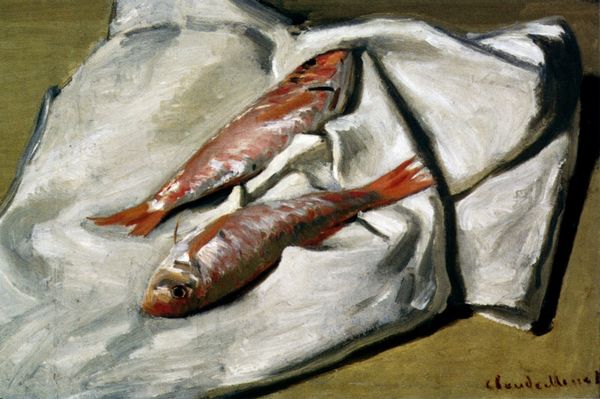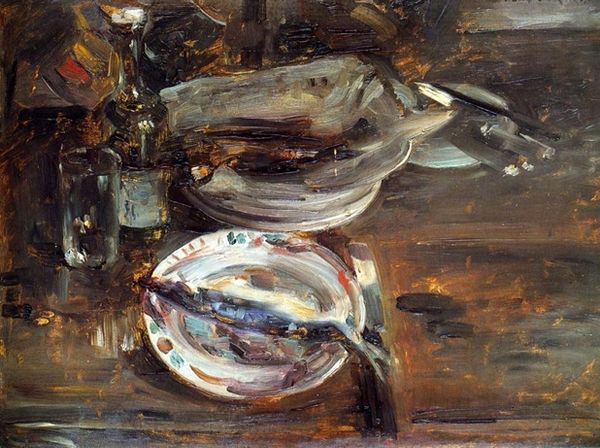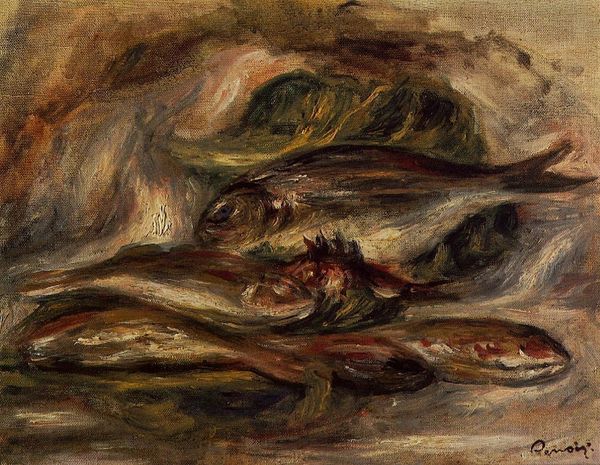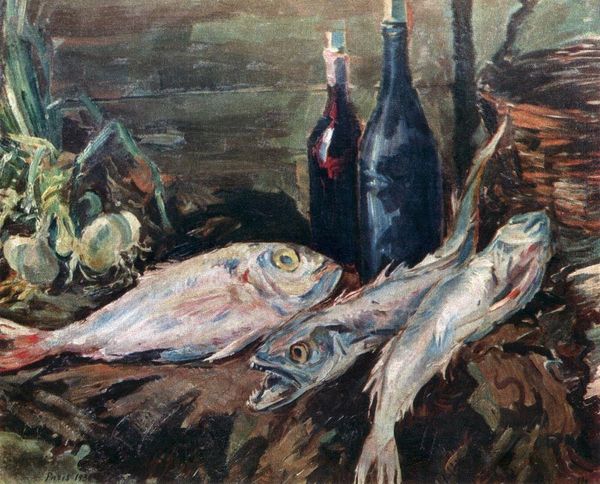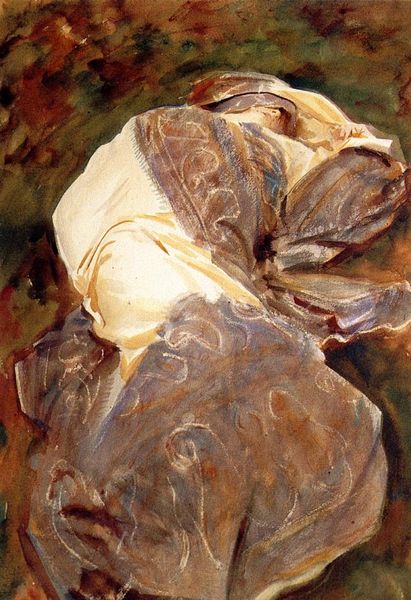
Copyright: Public domain
Editor: Korovin’s "Still Life with Lobster," created in 1930 using oil paint, presents an unexpected trio of seafood. What strikes me is the almost monochromatic palette – it mutes what I would imagine would be quite vibrant subjects into this study of somber tones. What's your take on this curious combination? Curator: Curious indeed! For me, this painting evokes a sense of memory, a nostalgic glance back at boisterous feasts by the sea. It’s less about precise representation and more about conjuring a mood. I wonder if Korovin isn’t less concerned with showing *us* what’s there, but reminding *himself*. Look at the almost frantic brushstrokes – it's less painting, more a fervent grasping at a moment fading from memory. What does it stir in you? Editor: It almost feels like the scene is fading or decaying. The colors feel muted. Curator: Yes! Think about that term ‘avant-garde’ that’s applied to Korovin and his contemporaries. He's challenging academic realism, yes, but also time itself. He paints not what IS, but what IS REMEMBERED. And memories, like paint, fade and blur. I almost sense a personal commentary on mortality there, don't you think? Editor: I hadn’t considered it that way. It reframes the composition completely – it's no longer just seafood, but this ephemeral snapshot of a past moment. Curator: Exactly. Maybe the lobster isn’t just lunch. Perhaps, it's a symbol of indulgence, or fleeting pleasure? Korovin offers us fragments, prompting us to fill in the gaps with our own interpretations, anxieties, and, dare I say, seafood cravings? Editor: (chuckles) Seafood cravings, indeed! I am now looking at it as a narrative. I now appreciate that initial monochrome palette so much more as the perfect stylistic approach for this topic. Thanks for the added layers to that visual language!
Comments
No comments
Be the first to comment and join the conversation on the ultimate creative platform.
